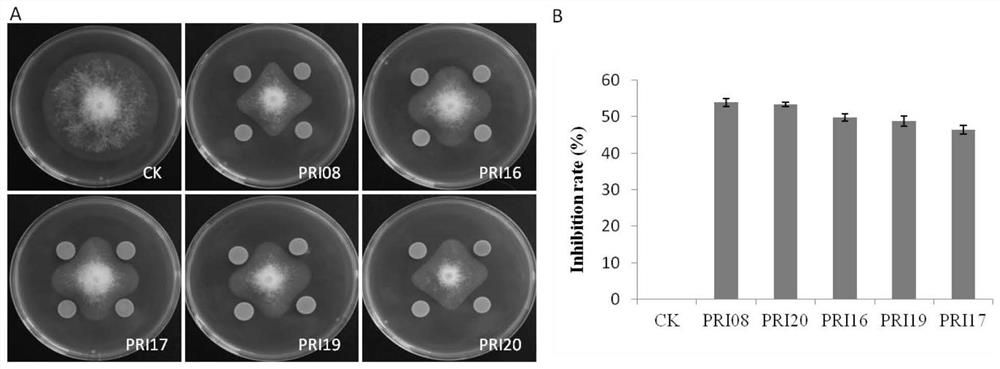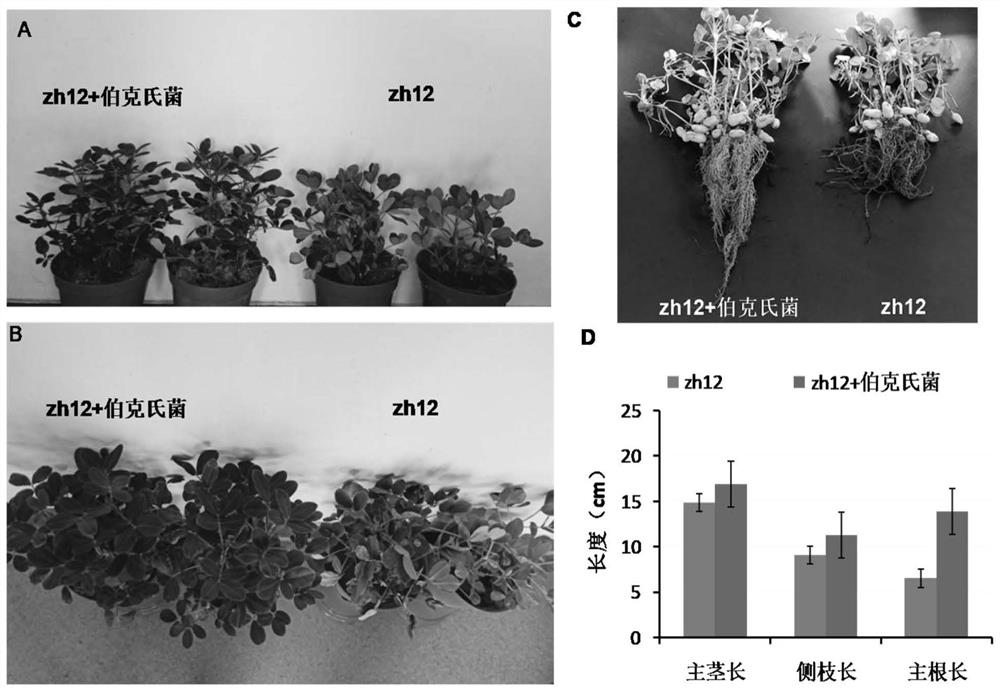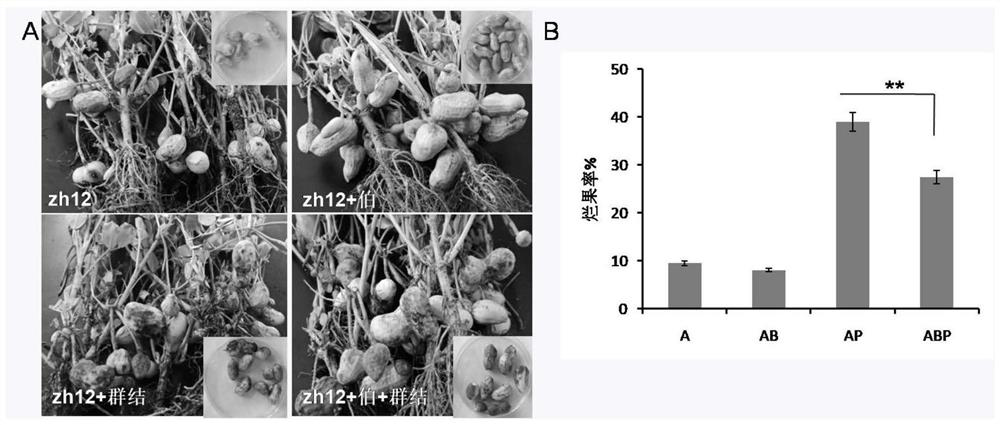A kind of peanut endogenous Burkholderia cepacia and application thereof
A technology of Burkholderia and onion, which is applied in the field of microorganisms, can solve the problems such as failure to prevent and control peanut fruit rot and high-efficiency biocontrol bacteria, and achieve the effects of remarkable control effect, high safety in use and environmental friendliness.
- Summary
- Abstract
- Description
- Claims
- Application Information
AI Technical Summary
Problems solved by technology
Method used
Image
Examples
Embodiment 1
[0033] Isolation and purification of strains
[0034] Healthy peanut plants were collected from the experimental field of Shandong Peanut Research Institute in Laixi City, Shandong Province, and the root, stem and leaf tissues were cut out, rinsed with tap water, and then washed 3 times with sterile water. Then soak it in 75% ethanol for 30 seconds, then soak it in 2% sodium hypochlorite solution for 2.5 minutes, take it out, soak it in sterile water and rinse it five times. Put it in a sterilized mortar, add 1mL sterile normal saline and 1g sterilized quartz sand in turn, grind fully at room temperature, take homogenate, and carry out 10-10 3 Take 100 μl of 10 for serial dilution -4 and 10 -5 The dilutions of the above-mentioned nutrient agar medium were spread on the nutrient agar medium, and each dilution was repeated 3 times. After being cultured in a constant temperature incubator at 28°C for 48 hours, a single colony with different cultural characteristics was picked a...
Embodiment 2
[0036] Screening of strains with antibacterial activity
[0037] In order to obtain the endophytic strain with the highest antagonistic activity, all candidate isolates were tested for their antagonism on Pythium conglomerate mycelium growth by disc diffusion method.
[0038] Through experiments, 5 strains of active bacteria were screened out, namely bacterial strain PRI08, bacterial strain PRI20, bacterial strain PRI16, bacterial strain PRI19, bacterial strain PRI17, and the above-mentioned 5 strains of active bacteria all showed different mycelia growth inhibition effects (see figure 1 ), where each experiment was repeated 3 times, and CK was the blank control group.
[0039] All the 5 strains of active bacteria showed different mycelial growth inhibition effects. In the mycelial growth inhibition test, the PRI08 strain had the highest inhibition rate (PIRG) of radial growth 2 days after inoculation (54% ± 2%) (P<0.05); Since the PRI08 strain had higher antagonistic activit...
Embodiment 3
[0041] Identification of the PRI08 strain
[0042] Morphological identification: PRI08 strains were cultured on nutrient agar medium at 28°C, and the colonies were round, yellow, smooth, raised, and entire. Bacteria were Gram-negative, strictly aerobic, and both catalase and oxidase were positive. At the same time, peanut seedlings inoculated with the cell suspension of the strain did not show obvious disease symptoms.
[0043] Molecular identification: Pick a single colony on the LB plate, dissolve it in 10 μL sterile water, use the bacterial suspension as a template, and amplify the 16S sequence with bacterial 16S universal primers. Upstream sequence, as shown in SEQ ID No.2, downstream sequence: as shown in SEQ ID No.3, a fragment of the bacterium was amplified.
[0044] The PCR system is a 50 μL system, 2 μL of bacterial suspension, 1.5 μL of upstream primers, 1.5 μL of downstream primers (primer concentration is 10 μmol / L), 5 μL of 10×PCR buffer, 1 μL of dNTPs, 2 μL of ...
PUM
 Login to View More
Login to View More Abstract
Description
Claims
Application Information
 Login to View More
Login to View More - R&D
- Intellectual Property
- Life Sciences
- Materials
- Tech Scout
- Unparalleled Data Quality
- Higher Quality Content
- 60% Fewer Hallucinations
Browse by: Latest US Patents, China's latest patents, Technical Efficacy Thesaurus, Application Domain, Technology Topic, Popular Technical Reports.
© 2025 PatSnap. All rights reserved.Legal|Privacy policy|Modern Slavery Act Transparency Statement|Sitemap|About US| Contact US: help@patsnap.com



